“A Data-Driven Approach to Balancing Creative Class Development and Social Equity in Barcelona”
The creative industries have been acknowledged as one of the most important sectors for economic growth and development in current cities worldwide. This sector represents a space of culture where all artistic and creative expression that pro-actively enters into dialogue with new technologies to the point where it adapts to them and finds in them an automatic reproduction tool, progressively come to rest.
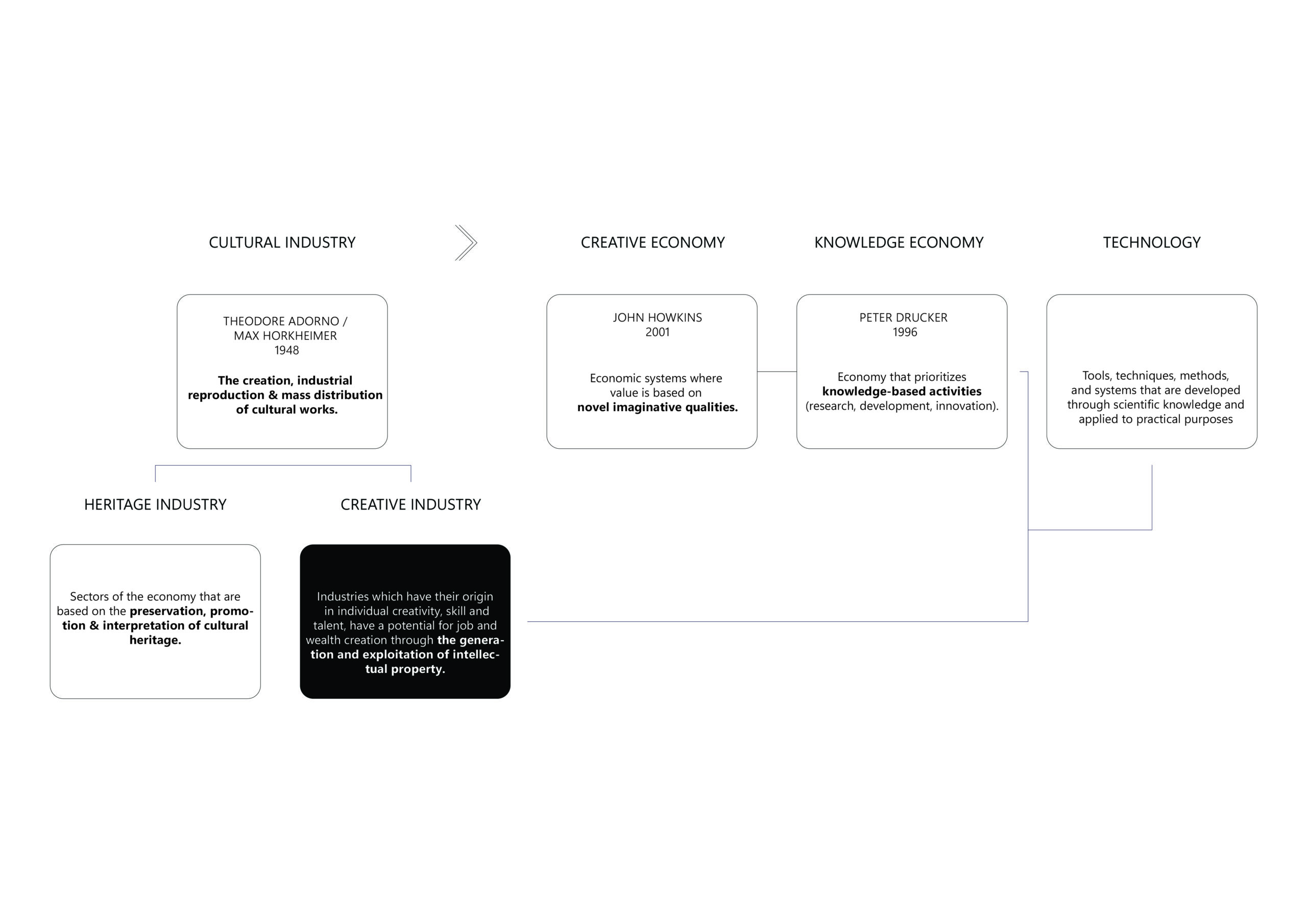
The city of Barcelona has a thriving creative sector with the potential to drive significant economic growth and development in the city. The creative industries in Barcelona encompass a wide range of activities, including design, fashion, film, music, advertising, and software development. These industries are an important source of employment, as they offer well-paying jobs in fields that are both creative and technologically advanced. Moreover, the creative industries contribute to the cultural and creative richness of the city, making it an attractive place to live and work for both locals and foreigners.
With a highly skilled workforce, a supportive business environment with over 4.500 companies that create more than 43.500 jobs, and a rich cultural heritage, Barcelona is well-positioned to attract investment and talent from the creative industries. The city has been investing in infrastructure and initiatives aimed at promoting the development of the creative industries, such as incubators, accelerators, and co-working spaces. This, combined with the city’s strong reputation as a cultural and creative hub, promotes the attraction of foreign entrepreneurs and creative professionals, that, on the one hand, have a significant impact on the local economy, but it can also lead to gentrification processes.

01. Problem Identification
Technological gentrification is a process by which the creative class, often made up of artists, designers, and technology workers, flock to an area and raise the cost of living, often causing the displacement of lower-income residents, as well as a profound impact on the cultural and social fabric of a city. The influx of high-income
residents can change the character of neighbourhoods, leading to the loss of historic and cultural landmarks and the homogenization of communities.
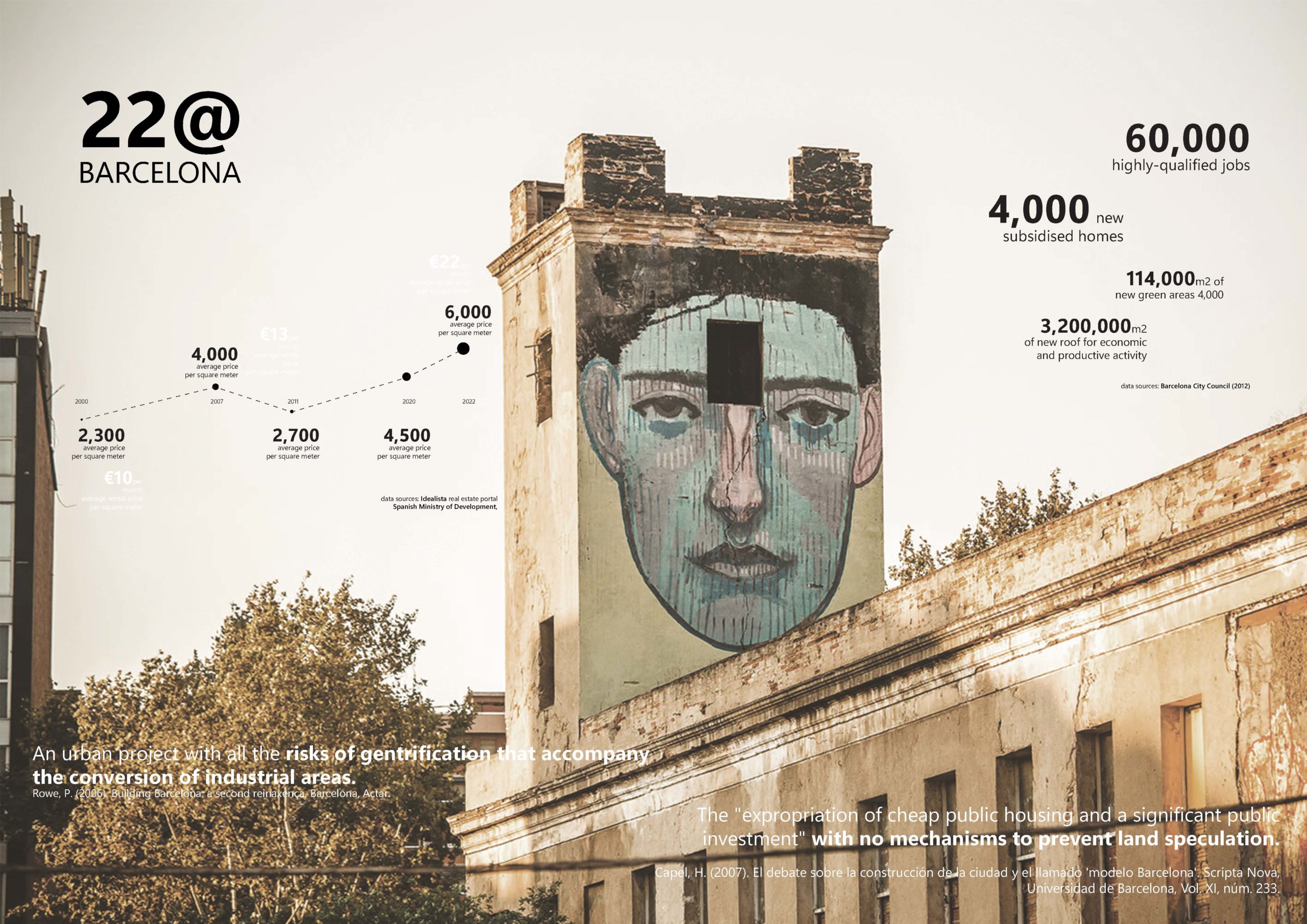
A clear example is Poblenou, and its so-called 22@ district, that changed from an industrial neighbourhood to a productive district of economic activity that would attract a higher-income managerial class to live in the Poblenou changing the pre-existing social dynamics. The project has been established as an international
benchmark and as a fundamental economic engine for the city of Barcelona and its metropolitan area, attracting investments in more than one million square metres of offices and more than 60,000 highly-qualified jobs, apart from those of an indirect nature. Moreover, from an urban point of view, the transformation allows the creation of 3,200,000 m2 of new roof for economic and productive activity, 400,000 m2 of new roof for equipment, 4,000 new subsidized homes and 114,000 m2 of new green areas (Barcelona City Council, 2012). On the other hand, not having known how to anticipate the gentrification process from the initial planning is currently expelling part of the population from the neighbourhood due to the enormous increase in housing prices.
02. Literature Review
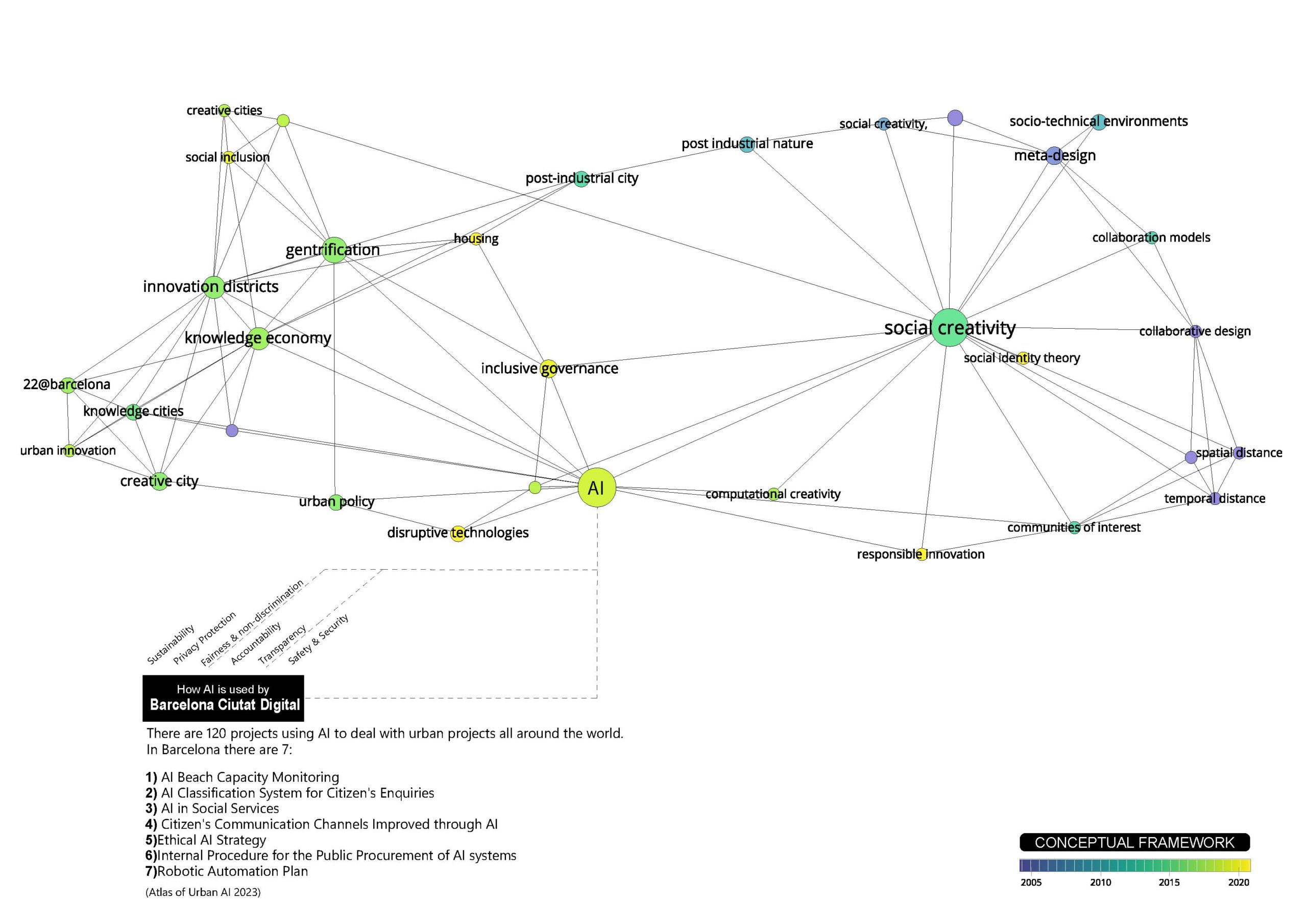
The analysis of several research papers highlights the potential growing interest in the implementation of Artificial Intelligence (AI) technologies in the field of urban planning to prevent and mitigate gentrification processes. The abilities of AI, such as machine learning, automation processes, autonomous decision-making,
and deep learning, to (1) analyze large amounts of data and (2) identify and forecast patterns could inform decision-making in urban planning towards more equitable and sustainable urban development outcomes.
03. Hypothesis and Objectives
The rollout of a comprehensive policy for Barcelona City Council would set up a framework to support the benefits and prevent the drawbacks of Artificial Intelligence systems in future urban planning strategies. Therefore, the general objective of the project is to ensure an optimal implementation of the technological model across all phases, by evaluating and improving the datasets for a machine learning algorithm aiming to predict and prevent gentrification processes.
There are three main pillars that will guide and emphasize our policy: Data Collection & Justice, People & Education. Consideration of these three pillars should occur at every phase of the policy process.

04. Policy Framework
The project objectives are in line with ongoing programs at three different levels: global, European, and national.
- (1) The policy endorses the challenges of the United Nations’ Sustainable Development Goals (SDGs) for 2030, essentially Goal 11 ‘Sustainable Cities and Communities’, set up as a call to action to end poverty, protect the planet, and ensure that by 2030 all people enjoy peace and prosperity. ‘The creativity, knowhow, technology and financial resources from all of society is necessary to achieve the SDGs in every context’ (UNDP).
- (2) With the programme “Europe’s Digital Decade 2030” by the European Commission, which aims to empower businesses and people in a human-centred, sustainable and more prosperous digital future. The EU policy sets up a framework for monitoring and cooperation mechanisms to achieve the common objectives and targets for Europe’s and its corresponding Member States’ digital transformation. The proposed policy for Barcelona seeks to join and strengthen the ambitions of the Digital Decade policy for 2030 both by digitising government procedures and planning, and by skilling (reskilling and upskilling) specialists and policymakers in line with the potentials of AI technologies.
- (3) Nationally, with the agenda Spain Digital 2026 that aims for the digital transformation of Spain. A strategy that includes a set of measures, reforms and investments, articulated in ten strategic axes, aligned to the digital policies set by the European Commission for the new period.
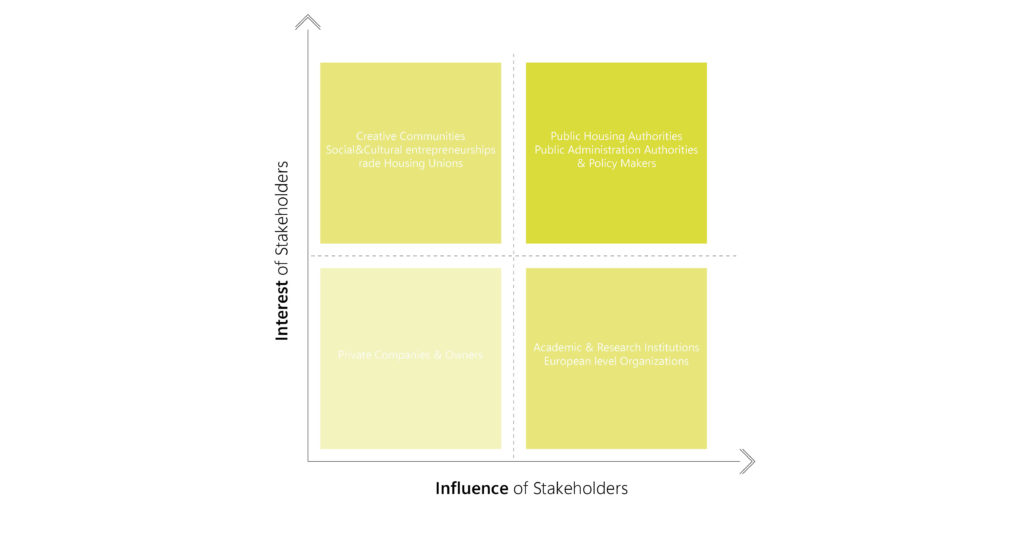
05. Policy Analysis
This phase is essential for determining the viability of the policy while providing the framework and direction for its development and implementation. To ensure the optimal implementation and setting of sound decisions and directions, this phase will lay emphasis on three categories: Politics and Culture, Operations, and Finance.
The City Council of Barcelona has a political history of implementing policies to prevent and mitigate gentrification, such as housing policies to fight speculation, promoted by the Barcelona Municipal Housing Institute (Imhab), and the set up of the Consejo de la Vivienda Social de Barcelona, as a consultative and participatory body on housing policy in the city. Therefore the idea of incorporating AI technologies within the administrative planning processes would be aligned in purposes.
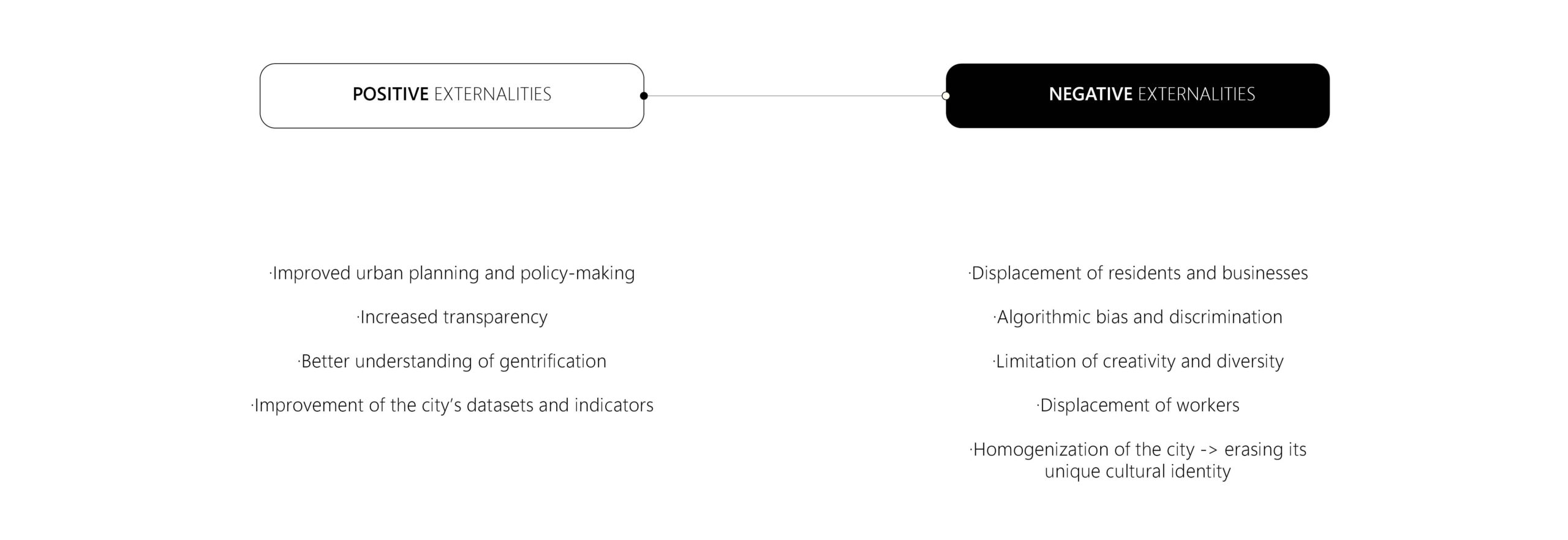
Positive externalities are referring to the beneficial effects of a policy that go beyond the intended benefits for the direct beneficiaries while Negative Externalities to the unintended and undesirable consequences of a policy that negatively impact individuals or communities outside of the immediate scope of the project.
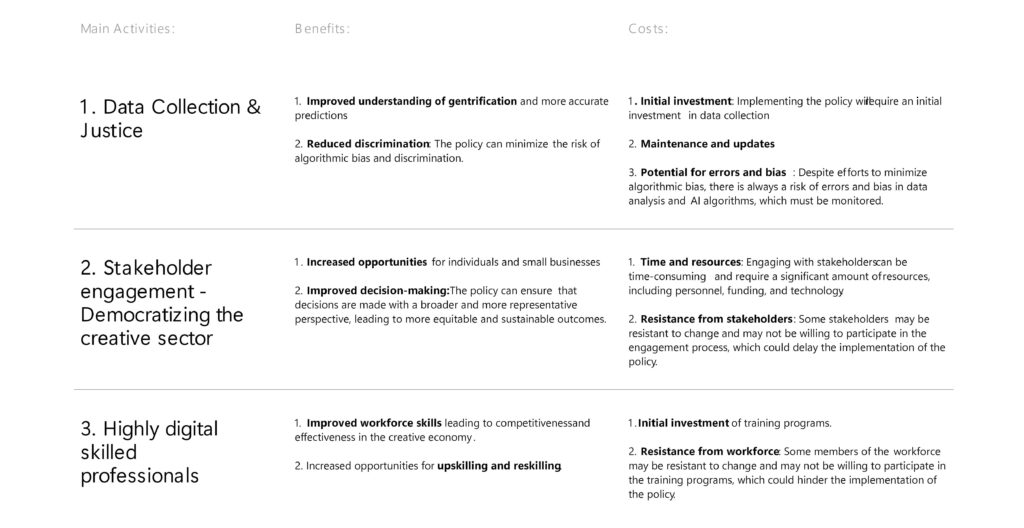
Cost–benefit analysis (CBA) is a method for assessing the economic efficiency of proposed public policies through the systematic prediction of social costs and social benefits. In that case, we identified both costs and benefits based on the three main pillars our policy consists of.
06. Strategy and Policy Development
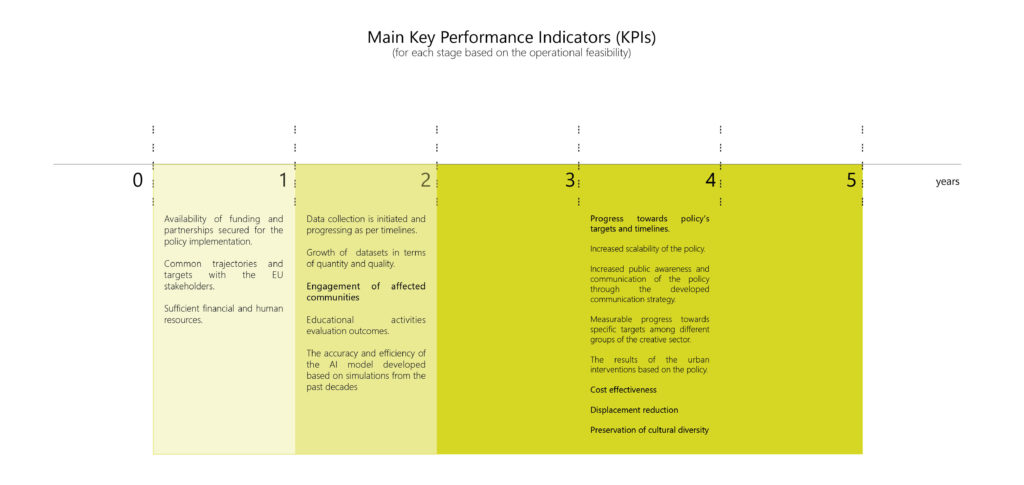
Key Performance Indicators (KPIs) are the critical (key) quantifiable indicators of progress toward an intended result. KPIs provide a focus for strategic and operational improvement, create an analytical basis for decision making and help focus attention on what matters most.

